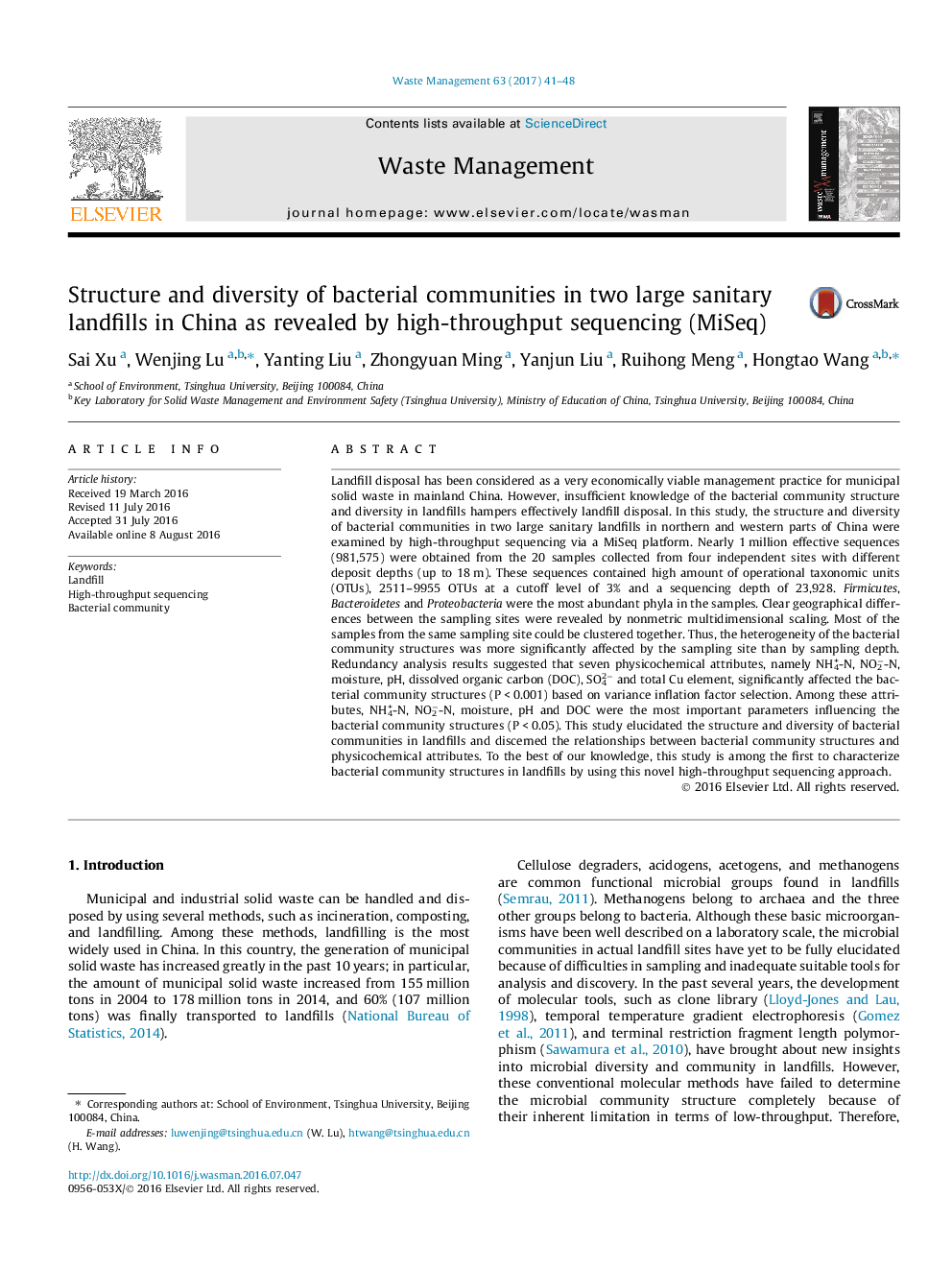| Article ID | Journal | Published Year | Pages | File Type |
|---|---|---|---|---|
| 5756852 | Waste Management | 2017 | 8 Pages |
â¢The bacterial communities in landfill waste were analyzed by MiSeq sequencing.â¢Firmicutes, Bacteroidetes and Proteobacteria were the most abundant phyla.â¢NH4+-N, NO2â-N affected the bacterial structure significantly.â¢Bacterial heterogeneity was more affected by the sampling site than by depths.
Landfill disposal has been considered as a very economically viable management practice for municipal solid waste in mainland China. However, insufficient knowledge of the bacterial community structure and diversity in landfills hampers effectively landfill disposal. In this study, the structure and diversity of bacterial communities in two large sanitary landfills in northern and western parts of China were examined by high-throughput sequencing via a MiSeq platform. Nearly 1Â million effective sequences (981,575) were obtained from the 20 samples collected from four independent sites with different deposit depths (up to 18Â m). These sequences contained high amount of operational taxonomic units (OTUs), 2511-9955 OTUs at a cutoff level of 3% and a sequencing depth of 23,928. Firmicutes, Bacteroidetes and Proteobacteria were the most abundant phyla in the samples. Clear geographical differences between the sampling sites were revealed by nonmetric multidimensional scaling. Most of the samples from the same sampling site could be clustered together. Thus, the heterogeneity of the bacterial community structures was more significantly affected by the sampling site than by sampling depth. Redundancy analysis results suggested that seven physicochemical attributes, namely NH4+-N, NO2â-N, moisture, pH, dissolved organic carbon (DOC), SO42â and total Cu element, significantly affected the bacterial community structures (PÂ <Â 0.001) based on variance inflation factor selection. Among these attributes, NH4+-N, NO2â-N, moisture, pH and DOC were the most important parameters influencing the bacterial community structures (PÂ <Â 0.05). This study elucidated the structure and diversity of bacterial communities in landfills and discerned the relationships between bacterial community structures and physicochemical attributes. To the best of our knowledge, this study is among the first to characterize bacterial community structures in landfills by using this novel high-throughput sequencing approach.
